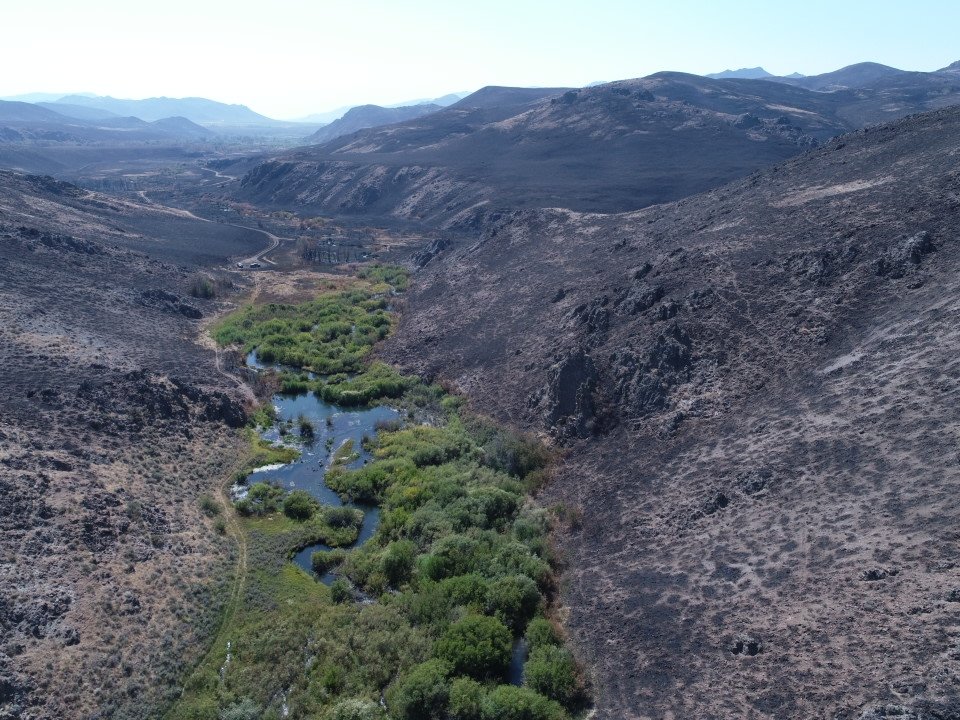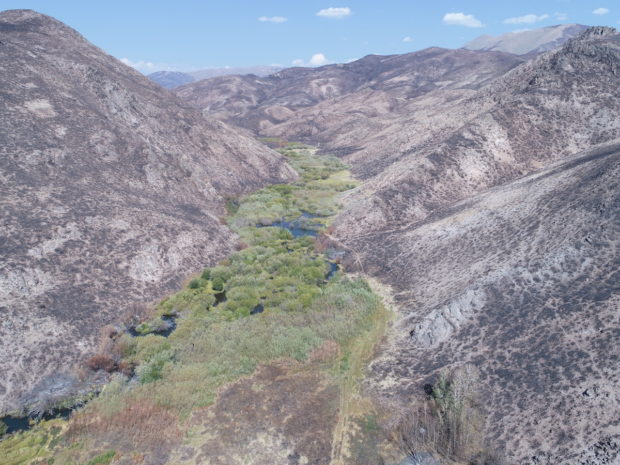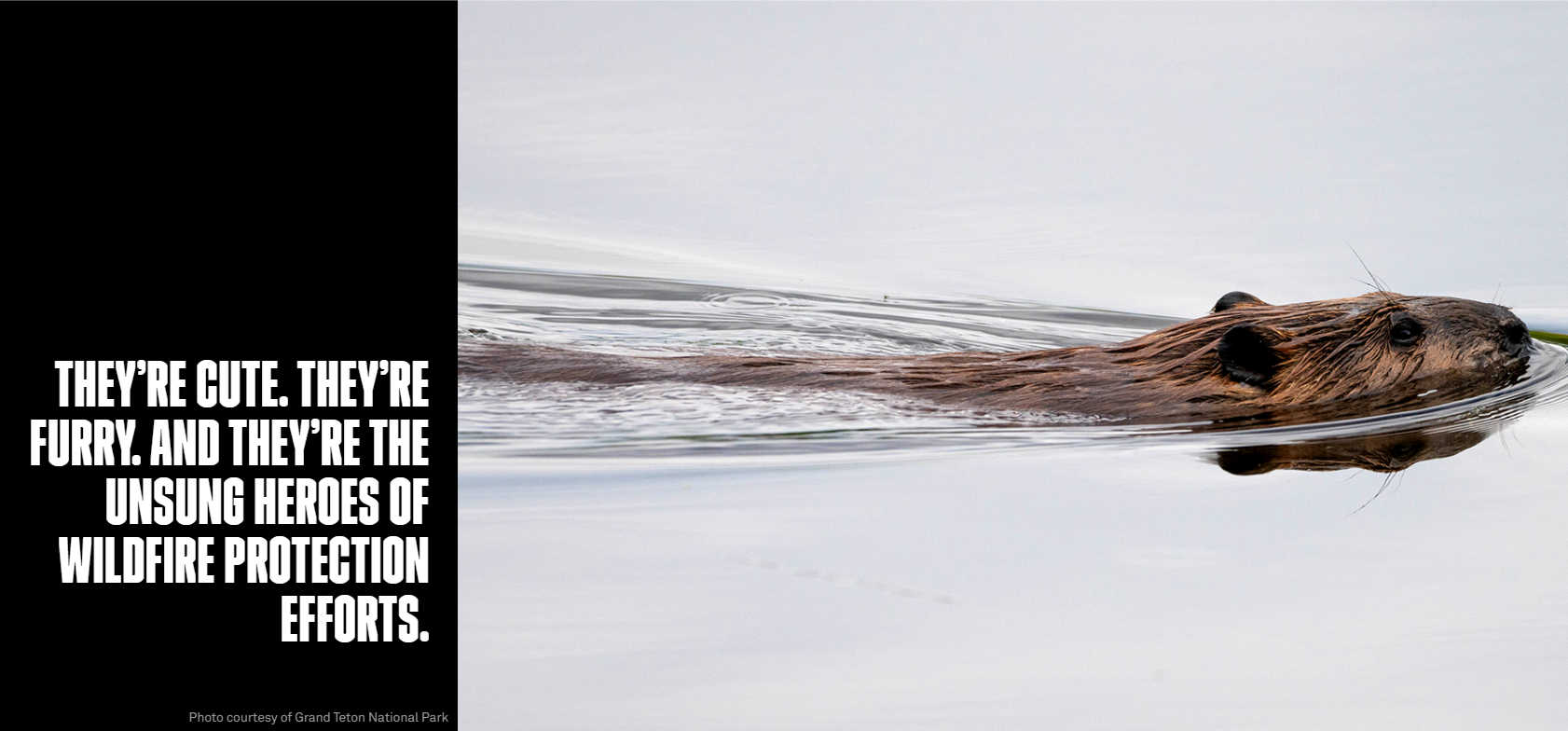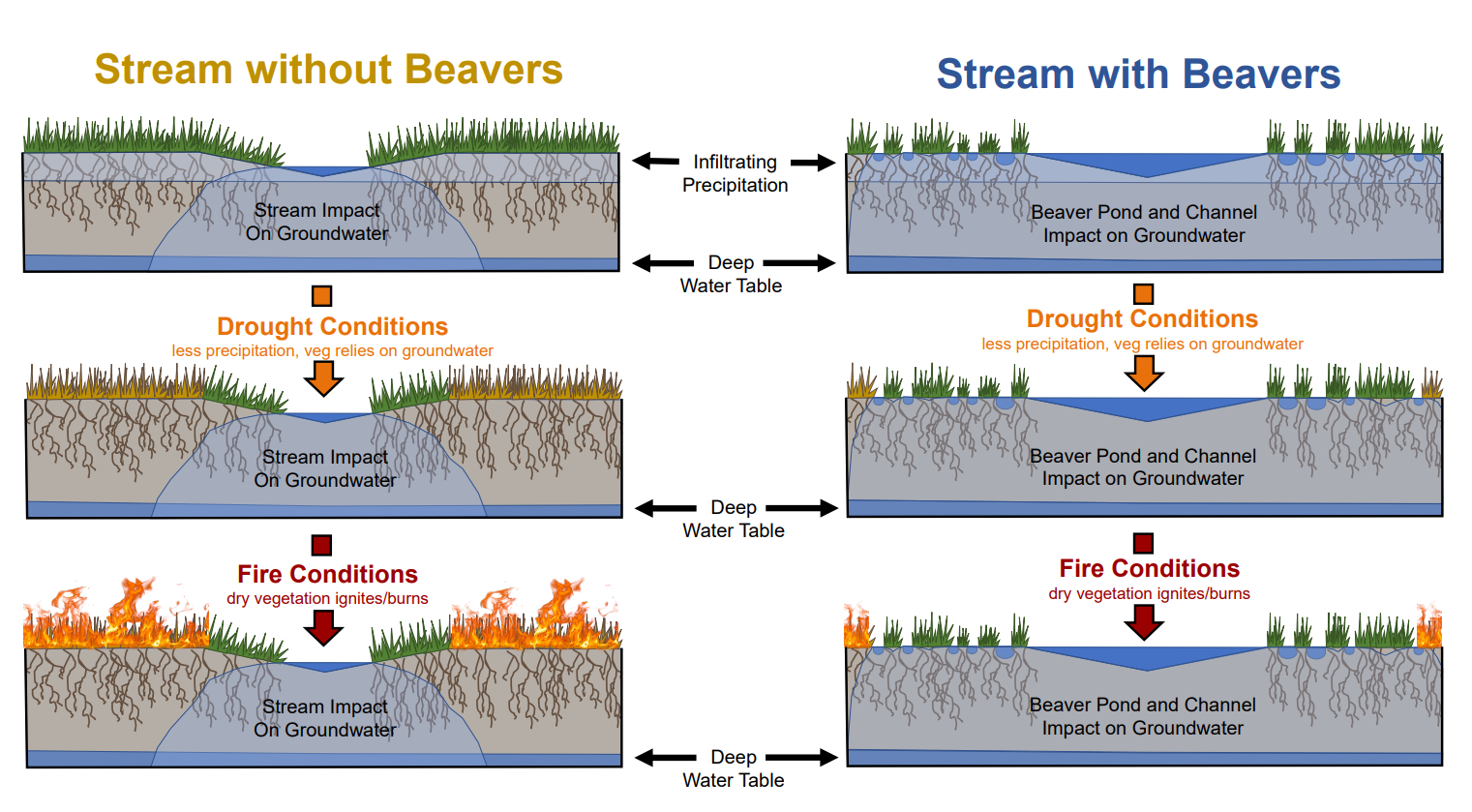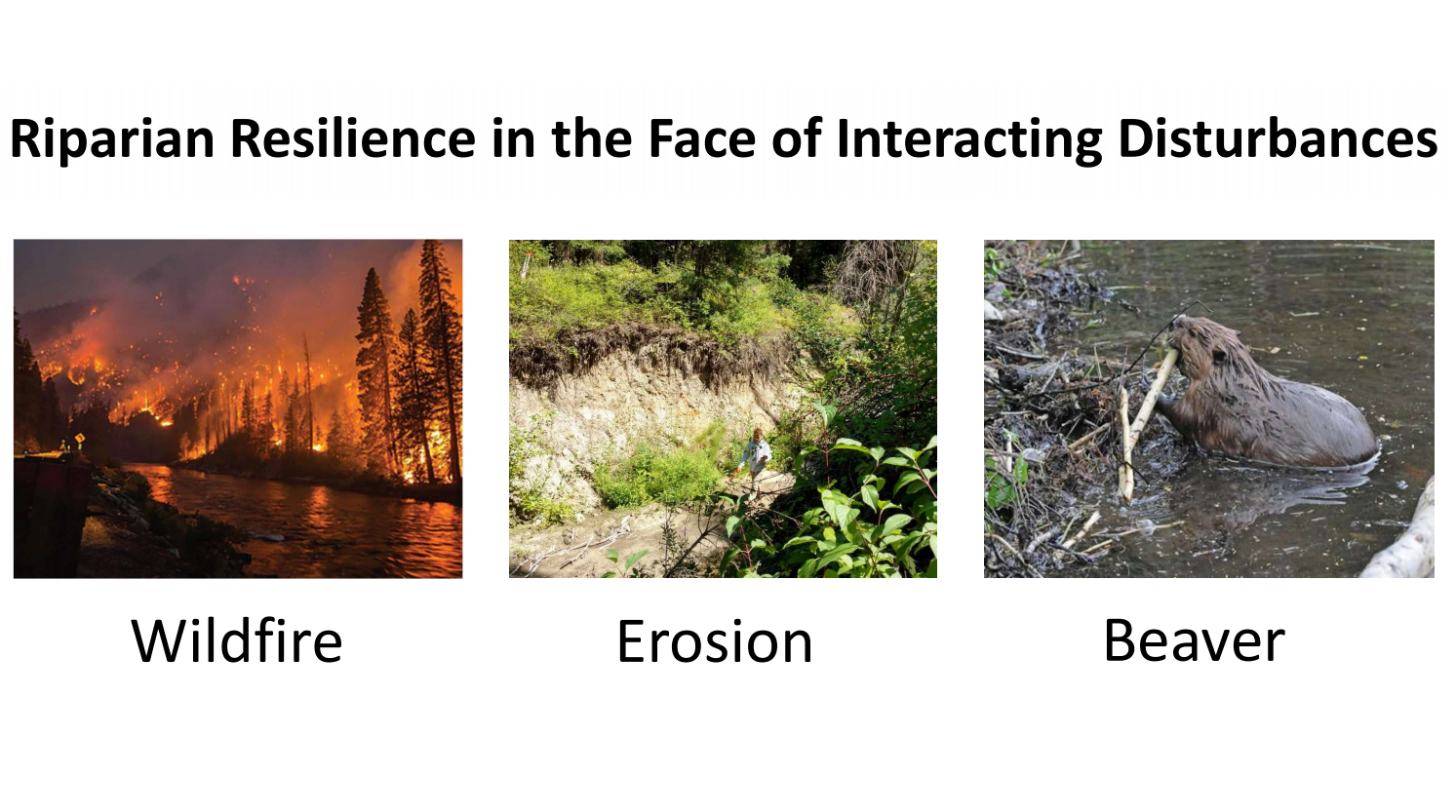Thank you to watershed researchers for documenting their work, we share below on beaver impacts to watershed health and wildfire resilience.
Water doesn't burn
We share this photo of wet, green refuge (for wildlife) within a burned landscape near Hailey, Idaho (the 2018 Sharp's Fire) as one worth strong consideration and the benefits of beaver presence on the landscape.
Learn more about Beavers, Water and Fire from National Wildlife Federation
Photos by Dr. Joe Wheaton, Utah State University
Beavers are the unsung heroes of wildlife protection efforts
A story on research by Benjamin Dittbrenner, associate teaching professor at Northeastern University. "Wetlands and beavers are an important part of the fire protection puzzle. Beaver ponds and wetlands have been shown to filter out water pollution, sequester carbon, and attenuate floods."
Smokey the Beaver: beaver‐dammed riparian corridors stay green during wildfire throughout the western USA
A timely, peer-reviewed article by Dr. Emily Fairfax just published (September 2020).
"We found that beaver-dammed riparian corridors are relatively unaffected by wildfire when compared to similar riparian corridors without beaver damming. Beaver activity... does play a significant role in riparian vegetation fire resistance and refugia creation. "
Read more at ESA Journals or contact us at reese@westernbeavers.org and we'll email you the article.
Could ‘Smokey Beaver’ help fight wildfires?
Oregon Field Guide, December 2021. Long considered “nature’s engineers,” beavers have put their teeth and talents to work, creating dams along waterways throughout the West.
Smokey the Beaver: A Webinar for the U.S. Forest Service by Dr. Emily Fairfax - February 2020
Presented to the USFS, available here on Dr. Fairfax's video channel.
Riparian Resilience in the Face of Interacting Disturbances
A presentation by Alexa Whipple of the Methow Beaver Project to the River Restoration Northwest Symposium 2019.
Beavers and Wildfire: a stop-motion story by Emily Fairfax
Beaver dams build climate resiliency by slowing water down and storing it in their ponds and the surrounding riparian area. Their wetlands are uniquely resistant to disturbances like droughts and fire!
Want to know more?
Visit emilyfairfaxscience.com or check her out on Twitter! @EmilyFairfax

